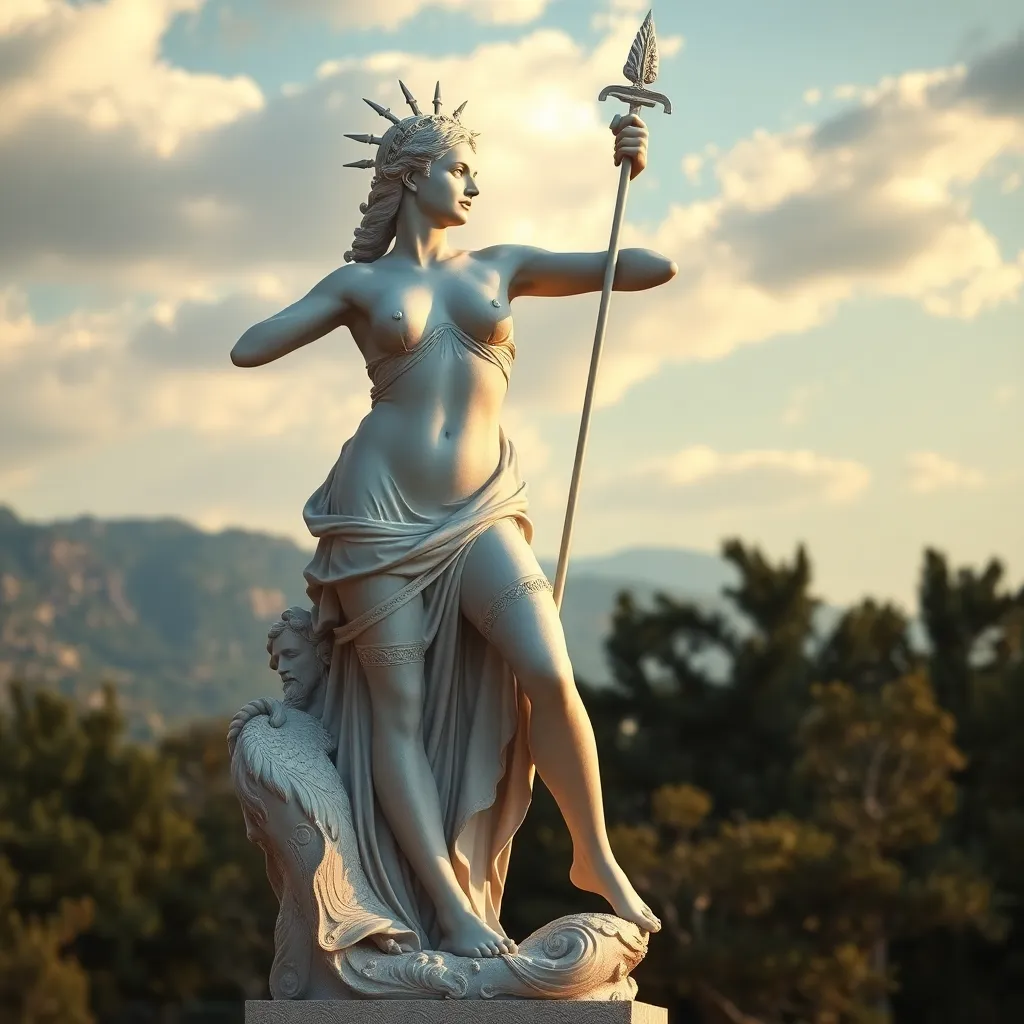The Influence of Artemis on Ancient Greek Art and Sculpture
I. Introduction
Artemis, one of the most revered deities in Greek mythology, embodies the complexities of the natural world and the human experience. As the goddess of the hunt, wilderness, and childbirth, she holds a unique place in ancient Greek culture that transcends mere mythology. Her influence permeates various aspects of life and spirituality, making her a focal point for artists and sculptors throughout the ages. This article aims to explore the profound impact of Artemis on ancient Greek art and sculpture, examining how her character and stories inspired countless works of creativity.
II. The Role of Artemis in Greek Mythology
Artemis is primarily known as the goddess of the hunt, representing independence and strength. She is often depicted with a bow and arrow, accompanied by a deer, symbolizing her dominion over the wilderness. However, her role extends beyond that of a hunter; she is also a protector of women and children, particularly during childbirth. This duality highlights her significance in Greek mythology:
- Protector: As a guardian of young women and children, Artemis offers protection and guidance.
- Hunter: Her skills in hunting symbolize freedom and the untamed aspects of nature.
Popular myths associated with Artemis include her fierce vow of chastity and her role in avenging the death of her mother, Leto. These stories further emphasize her complexity and the respect she commanded in ancient Greek society.
III. Representation of Artemis in Ancient Greek Art
Artistic representations of Artemis often reflect her character and the values she embodies. Common themes and symbols associated with her include:
- The bow and arrow, representing her prowess as a huntress.
- The deer, symbolizing her connection to nature.
- The crescent moon, linking her to lunar attributes and femininity.
In ancient pottery and frescoes, Artemis is frequently depicted in hunting scenes, showcasing her skills and the beauty of the natural world. The evolution of her portrayal can be traced through different periods of Greek art:
- Geometric Period: Simplistic forms and linear designs.
- Archaic Period: More naturalistic representations with a focus on movement.
- Classical Period: Highly detailed and expressive forms, emphasizing her divine nature.
- Hellenistic Period: Dramatic poses and emotional depth, showcasing her complexities.
IV. Artemis in Sculpture: Styles and Techniques
Artemis has inspired numerous sculptural works throughout the history of Greek art. Major styles influenced by her include:
- Archaic Style: Characterized by rigid postures and stylized features.
- Classical Style: Celebrated for its realism and idealized proportions.
- Hellenistic Style: Noted for its emotional expressiveness and intricate details.
One of the most notable sculptures of Artemis is the Artemis of Ephesus, which showcases her as a multi-breasted figure, symbolizing fertility and motherhood. This sculpture reflects the goddess’s nurturing aspect while maintaining her fierce hunting persona. Techniques used by sculptors to convey her characteristics include:
- Use of drapery to enhance the sense of movement.
- Contrasting textures to differentiate between skin, clothing, and nature.
- Facial expressions that convey strength and determination.
V. Artemis and Architectural Influence
The worship of Artemis is most famously represented in the grand temples dedicated to her, notably the Temple of Artemis at Ephesus. This temple was one of the Seven Wonders of the Ancient World, showcasing the architectural prowess of the time. Key features of such temples include:
- Columns: Tall, ornate columns that reflect the grandeur of her worship.
- Sculptural Reliefs: Depictions of Artemis and scenes from her mythology adorning the temple structures.
- Open Spaces: Sanctuaries that allowed for public worship and artistic expression.
The role of sacred spaces in artistic expression cannot be overstated, as these architectural marvels served as both places of worship and canvases for artistic endeavors.
VI. The Impact of Artemis on Other Deities and Art Forms
Artemis’s influence is not limited to her own representations; she also compares favorably with other goddesses in art, such as Athena and Demeter. Her imagery often blends with themes of femininity and power, inspiring later artistic movements, including the Renaissance. Notably, artists have integrated Artemis themes in various art forms:
- Literature: References to Artemis in poetry and prose highlight her enduring legacy.
- Theater: Dramatic portrayals of her stories in ancient plays.
- Visual Arts: Depictions in paintings and sculptures that explore her complex character.
VII. Legacy of Artemis in Modern Art and Pop Culture
In contemporary settings, the themes and attributes of Artemis have experienced a revival. Modern artists draw inspiration from her stories and symbolism, reflecting her relevance in today’s society. Furthermore, representations of Artemis in popular culture can be found in:
- Film: Movies that feature strong female characters inspired by her persona.
- Literature: Books that explore themes of nature and empowerment linked to Artemis.
- Fashion and Art: Designs and artworks that celebrate her connection to the natural world.
The ongoing relevance of Artemis in discussions of feminism and nature highlights her importance as a symbol of independence and strength in the face of adversity.
VIII. Conclusion
In summary, the influence of Artemis on ancient Greek art and sculpture is profound and multifaceted. From her dual nature as a protector and hunter to her representation in various art forms, Artemis embodies the complexity of the human experience. Her legacy continues to resonate through modern interpretations and discussions, illustrating the lasting impact of mythology on art and culture. As we further explore these connections, we uncover the rich tapestry of creativity inspired by the divine.




